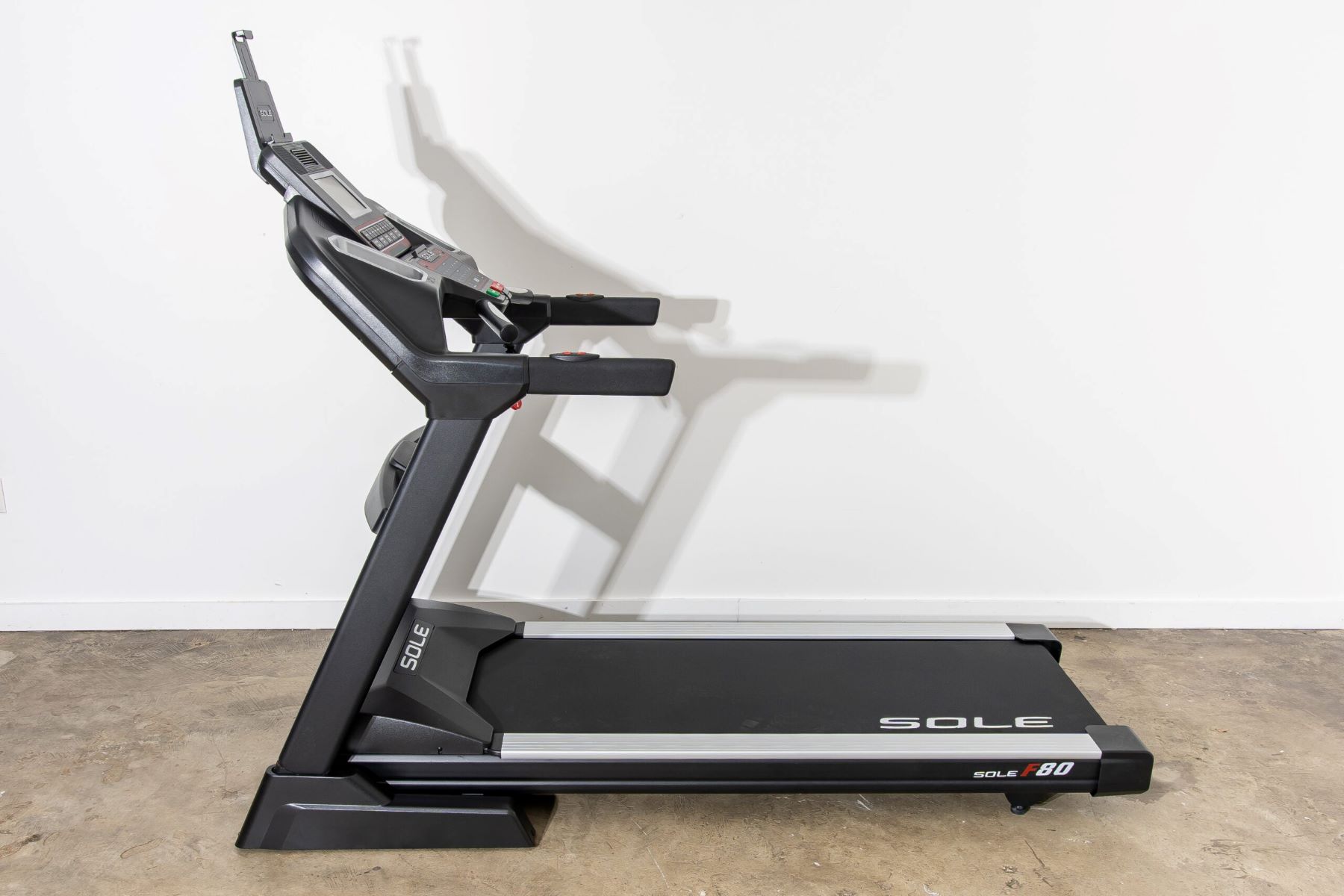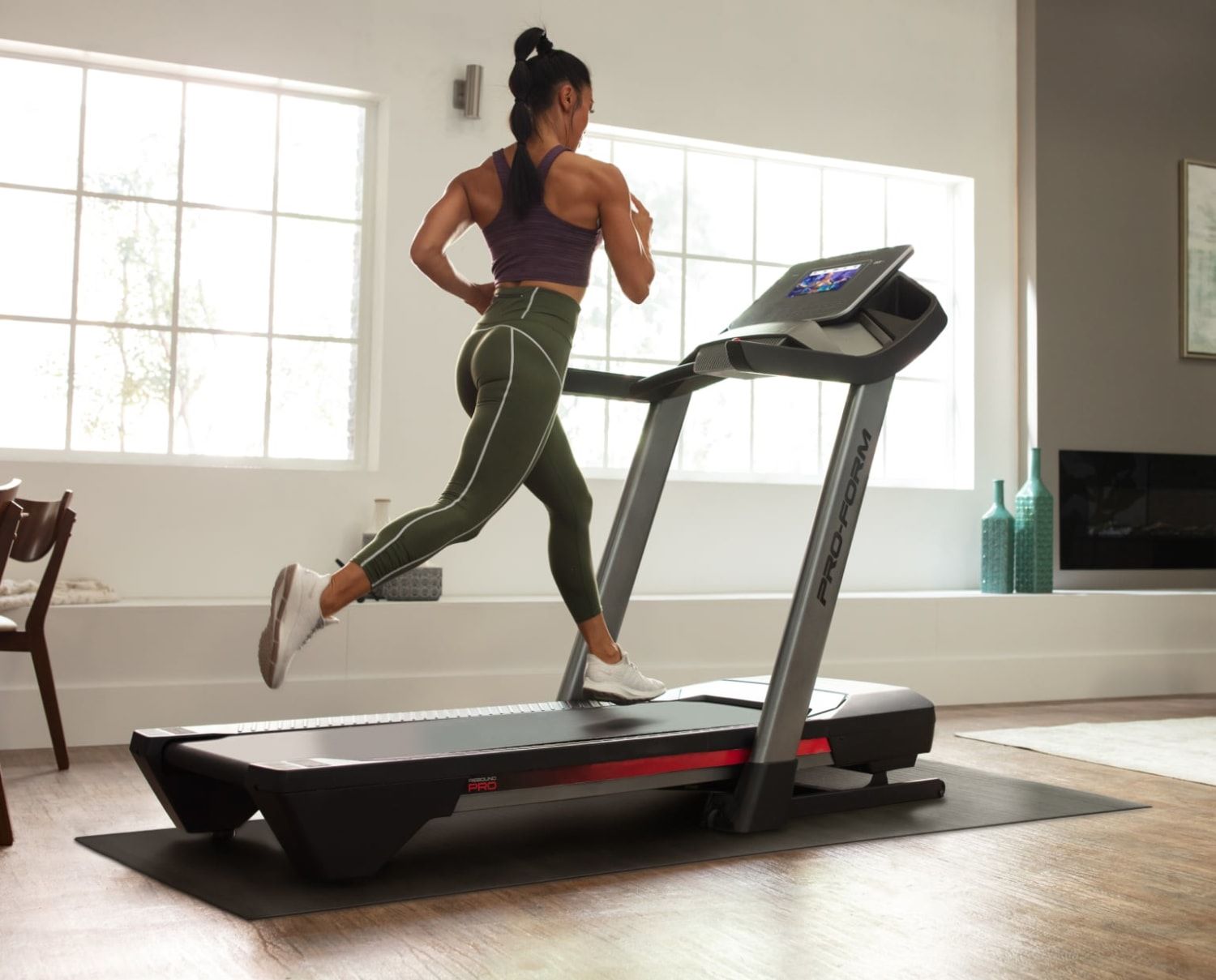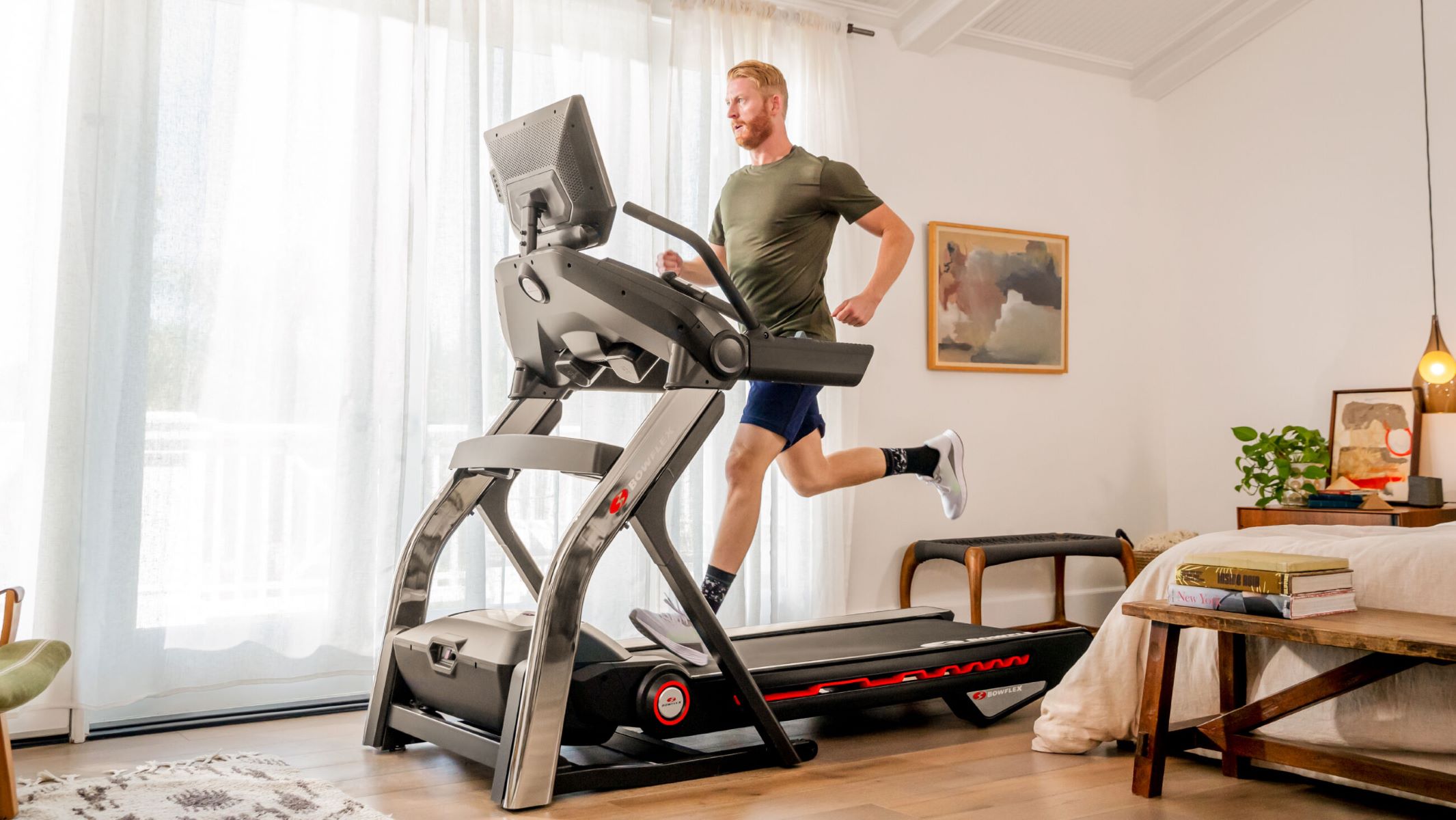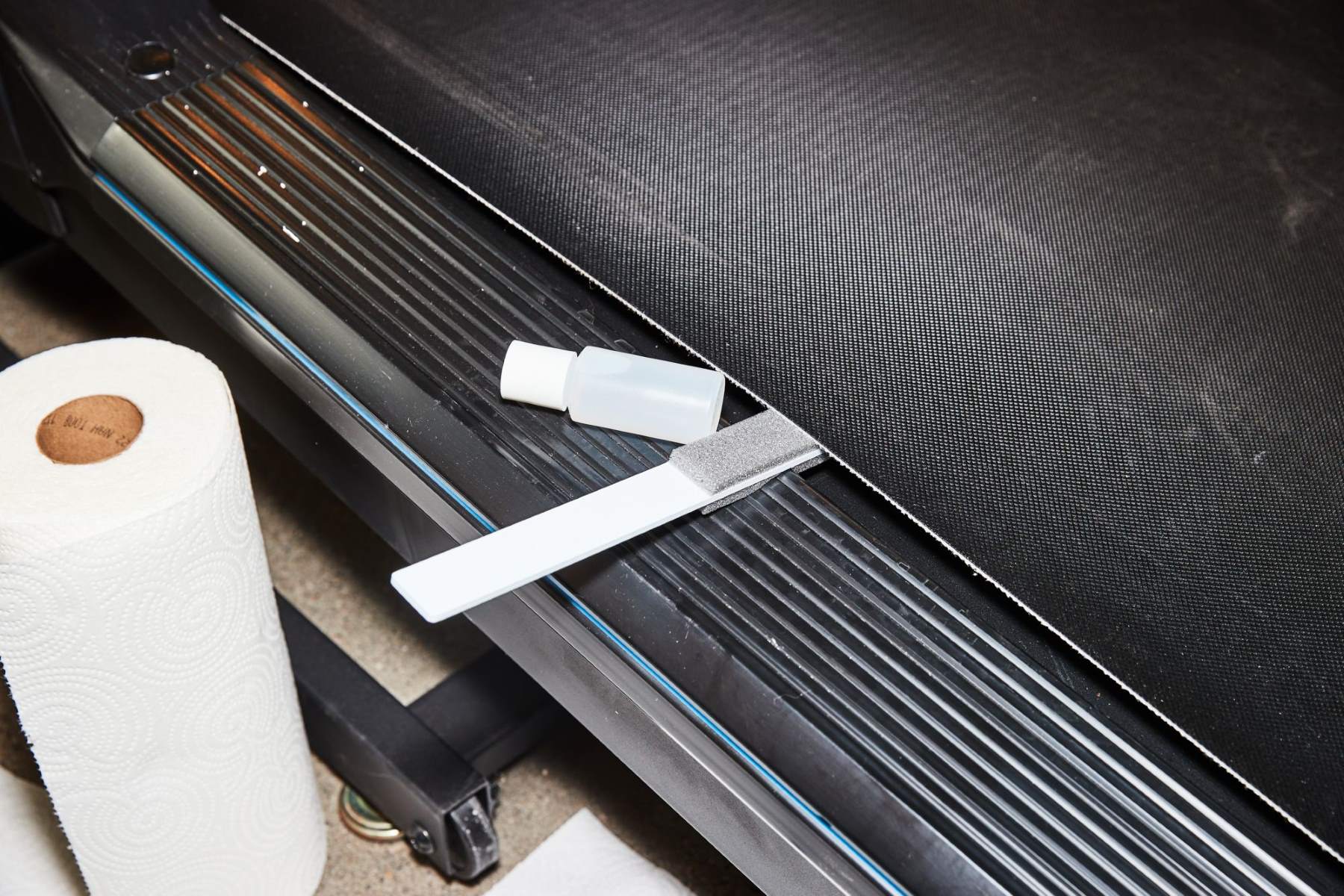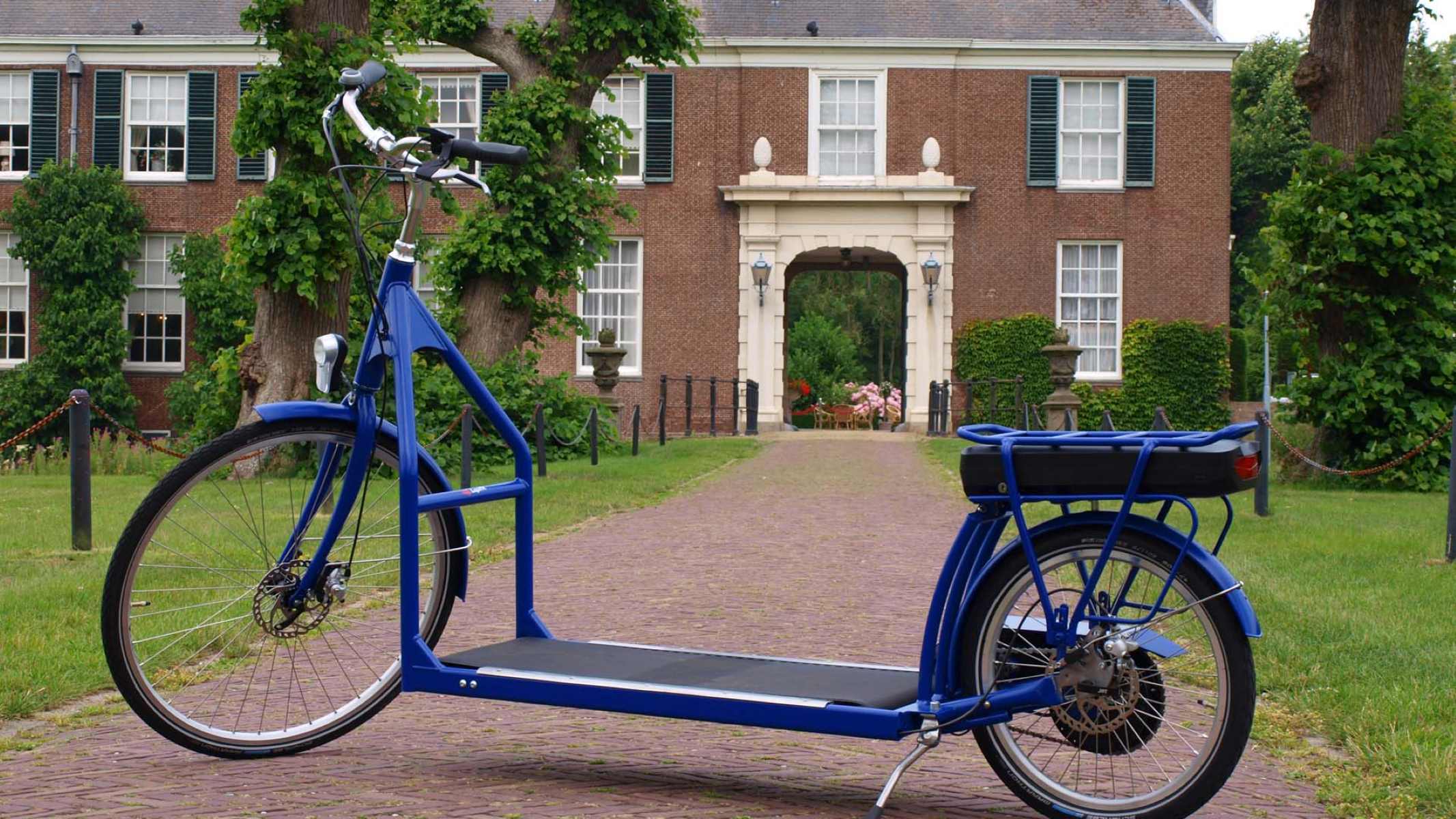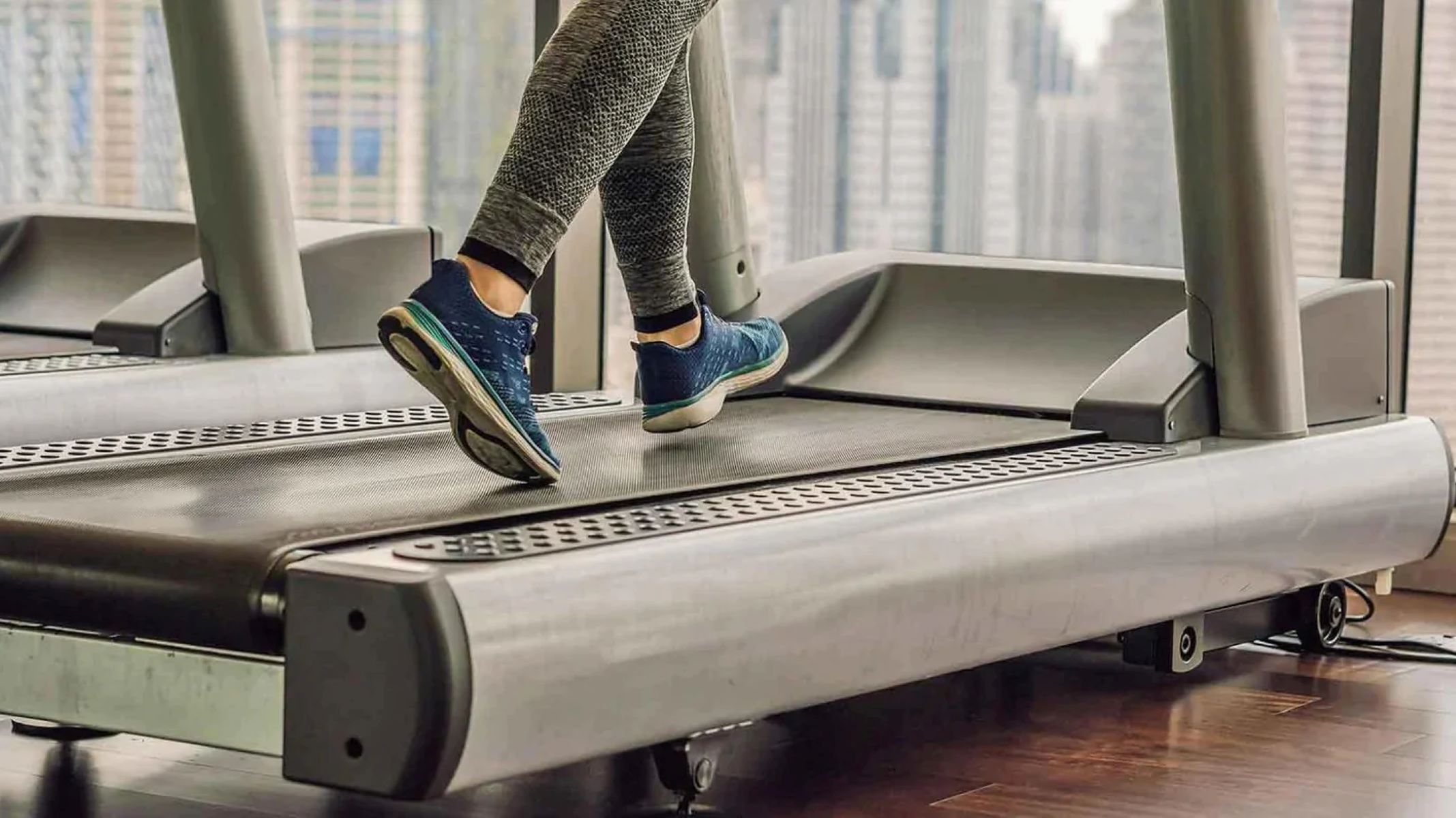

Featured
How To Make Treadmill Quieter
Modified: August 18, 2023
Learn how to make your treadmill quieter with these simple tips and techniques. Discover the featured methods to reduce noise and enjoy a peaceful workout at home.
Introduction
Having a treadmill at home is a convenient way to stay fit and active, especially when getting to the gym is not always feasible. However, one common issue that many treadmill owners face is the noise it produces. The loud thumping or squeaking sounds can be disruptive, whether you’re trying to exercise or trying to maintain a peaceful environment at home. The good news is that there are several steps you can take to make your treadmill quieter, allowing you to enjoy your workout without disturbing others.
In this article, we will explore various methods and techniques to reduce treadmill noise effectively. From choosing the right location to maintaining proper care, each step will contribute to creating a quieter and more enjoyable workout experience. Whether you have a new or old treadmill, these tips will help you minimize the noise and create a peaceful exercise environment in your home.
Let’s dive into the details of how you can make your treadmill quieter and enhance your workout experience.
Choosing the Right Location
The location of your treadmill plays a significant role in determining how much noise it produces. By selecting the right spot, you can greatly reduce the impact of treadmill noise on your surroundings. Here are some key factors to consider:
- Flooring: The type of flooring in the room can impact treadmill noise. If possible, choose a room with carpeted or cork flooring, as they absorb sound better than hardwood or tile floors.
- Room Size: Opt for a room with ample space to accommodate your treadmill. A larger room can help disperse the sound more effectively, minimizing noise transfer to other areas of your home.
- Noise-sensitive Areas: Avoid placing your treadmill near rooms that require peace and quiet, such as bedrooms or home offices. Choose a location away from these areas to prevent disturbances.
Furthermore, consider the overall layout of your home and the noise-reducing features it offers. If your home has a basement, it can act as a buffer zone, effectively isolating the sound. Similarly, positioning the treadmill against a wall can help diminish sound transmission.
By selecting the right location for your treadmill, you can significantly reduce the noise impact on your living environment. Take these factors into account when setting up your treadmill to create a quieter workout space.
Using a Treadmill Mat
Another effective method to reduce treadmill noise is by using a treadmill mat. A treadmill mat is a thick, rubberized mat that sits underneath the treadmill to absorb vibrations and noise. Here’s how using a treadmill mat can help:
- Vibration Absorption: Treadmill mats are designed to absorb vibrations caused by the movement of the treadmill. These vibrations can transfer to the floor and create a loud thumping noise. The mat acts as a barrier, reducing the vibrations and minimizing the noise generated.
- Sound Dampening: The thick, rubberized material of the treadmill mat also helps to dampen the sound produced by the treadmill. It absorbs the impact and muffles the noise, resulting in a quieter workout experience.
When selecting a treadmill mat, look for one that is specifically designed for treadmills and is the appropriate size for your machine. Make sure it is made from high-quality materials that are durable and can withstand the weight and movement of the treadmill.
To use the treadmill mat, simply place it underneath your treadmill on a stable and level surface. The weight of the machine will help keep the mat in place. Ensure that the mat extends beyond the footprint of the treadmill to adequately cover the area and provide the best noise reduction.
Using a treadmill mat not only reduces the noise impact on your surroundings but also helps protect your flooring from potential damage caused by the treadmill’s vibrations and movement. It is an affordable and practical solution to make your treadmill quieter.
Lubricating the Belt
One of the common causes of treadmill noise is a lack of lubrication on the belt. Over time, the belt can become dry and friction between the belt and the deck increases, resulting in squeaking or grinding noises. Regularly lubricating the belt can help reduce friction and minimize noise. Here’s how to lubricate your treadmill belt:
- Check the Manufacturer’s Guidelines: Each treadmill may have specific lubrication requirements. Refer to the manufacturer’s guidelines or user manual to determine the recommended lubricant and frequency of application.
- Prepare the Treadmill: Before applying the lubricant, ensure that the treadmill is turned off and unplugged from the power source. Raise the treadmill’s deck to access the underside of the belt.
- Clean the Belt and Deck: Use a clean cloth or towel to wipe away any dust, debris, or old lubricant from the belt and deck. A clean surface will allow for proper lubricant application and prevent any buildup.
- Apply the Lubricant: Following the manufacturer’s instructions, apply the lubricant to the underside of the belt. Use a small amount and spread it evenly across the width of the belt. Avoid over-lubricating, as this can lead to excess buildup and potential slipping.
- Run the Treadmill: After lubricating the belt, plug in the treadmill and turn it on. Let the treadmill run at a slow speed for a few minutes to evenly distribute the lubricant and allow it to penetrate the belt and deck. This will ensure optimal performance and reduce noise.
Regularly lubricating the treadmill belt, as recommended by the manufacturer, will not only make your treadmill quieter but also prolong the lifespan of the machine. It is an essential maintenance step that should be performed periodically to keep your treadmill running smoothly and quietly.
Tightening Loose Parts
If your treadmill is producing rattling or clanking noises, it may be due to loose parts. Over time, the constant use and vibrations can cause bolts and screws to become loose. Tightening these loose parts can help eliminate the noise and ensure a quieter workout. Here’s how to tighten the loose parts of your treadmill:
- Check for Loose Screws: Inspect the entire treadmill, including the frame, console, and handrails, for any loose screws or bolts. Use a screwdriver or wrench to tighten these screws, being careful not to overtighten.
- Stabilize the Frame: If the frame of your treadmill is wobbling or shaking, check for any loose or misaligned parts. Tighten any bolts or screws that connect the frame together. You may need to use an adjustable wrench or pliers to secure these parts.
While tightening the loose parts, be cautious and avoid overtightening, as it can damage the components or strip the threads.
In addition to the main frame, pay attention to the console and handrails. Tighten any loose screws or bolts and ensure that these parts are securely attached. A stable and well-connected treadmill will not only be quieter but also safer to use.
Regularly checking and tightening the loose parts of your treadmill is a simple yet effective way to prevent unnecessary noise and maintain its overall stability. Incorporating this step into your treadmill maintenance routine will keep your machine functioning properly and reduce any annoying rattling or clanging sounds.
Checking for Worn Components
If your treadmill is making unusual noises like squeaking, screeching, or grinding, it may be a sign of worn components. Over time, the constant friction and usage can cause certain parts to deteriorate, resulting in increased noise levels. By identifying and replacing these worn components, you can restore your treadmill to a quieter state. Here are some components to check for wear:
- Treadmill Belt: Inspect the belt for any signs of fraying, cracking, or excessive wear. A worn-out treadmill belt can cause noise and reduce the overall performance of the machine. If you notice any of these issues, it’s time to replace the belt.
- Rollers: The rollers are responsible for smoothly guiding the treadmill belt. If they are worn or damaged, they can create noise during operation. Check the rollers for any signs of excessive wear or cracks. If necessary, replace the rollers to reduce noise and ensure proper functionality.
- Bearings: Worn or damaged bearings can also contribute to loud noises. Inspect the bearings located at the front and rear roller areas. If you notice any grinding or roughness when spinning the rollers, it may indicate worn bearings. Replacing these bearings can help eliminate noise and improve the overall performance of the treadmill.
- Motor: Although less common, a noisy treadmill can be attributed to a worn-out motor. Listen for any unusual sounds coming from the motor, such as a high-pitched whining or grinding noise. If the motor is the source of the noise, it may require professional repair or replacement.
Regularly checking for worn components and replacing them as needed is essential for maintaining a quiet treadmill. By addressing these issues promptly, you can prevent further damage and ensure the smooth and noise-free operation of your machine.
Adjusting the Treadmill Belt
A misaligned or improperly tensioned treadmill belt can cause a variety of noise issues, such as slippage, rubbing, or excessive friction. Adjusting the treadmill belt is crucial to ensure smooth and quiet operation. Here’s how you can adjust the tension and alignment of your treadmill belt:
- Tension Adjustment: Start by checking the tension of the treadmill belt. If it is too loose, it may slip or create a slapping sound during use. If it is too tight, it can cause excessive friction and noise. Refer to your treadmill’s user manual for specific instructions on how to adjust the belt tension. Typically, there are tension adjustment bolts or screws located at the rear end of the treadmill. Loosen or tighten these bolts gradually until the belt has the right amount of tension. It should be snug but not overly tight.
- Alignment Adjustment: Next, check the alignment of the treadmill belt. An off-center belt can rub against the sides, creating a squeaking or rubbing noise. To adjust the alignment, locate the rear adjustment bolts on the treadmill. Use an Allen wrench or a screwdriver to make slight adjustments, moving the belt left or right until it is properly aligned. Ensure that the belt is centered and runs smoothly without any rubbing or friction against the sides.
Regularly checking and adjusting the tension and alignment of your treadmill belt will not only minimize noise but also improve its performance and longevity. It is recommended to perform these adjustments periodically, especially after belt replacement or if you notice any noise or irregularities during your workouts.
Reducing Vibrations
Vibrations can contribute to the overall noise produced by a treadmill. Minimizing these vibrations can significantly reduce the noise level and create a quieter workout environment. Here are some methods to reduce vibrations:
- Level the Treadmill: Ensure that your treadmill is placed on a level surface. Use a spirit or bubble level to check if the treadmill is balanced. If it’s not level, adjust the adjustable leveling feet or place shims underneath to stabilize it. A leveled treadmill will help distribute the weight evenly and minimize vibrations.
- Use Anti-Vibration Pads: Anti-vibration pads are specially designed to absorb vibrations and reduce noise. Place these pads under the feet or contact points of the treadmill to create a cushioning effect. This helps to dampen vibrations and prevent them from transferring to the floor, resulting in a quieter operation.
When selecting anti-vibration pads, make sure they are suitable for the weight and dimensions of your treadmill. Opt for high-quality pads made from materials like rubber or neoprene for optimal vibration reduction.
Reducing vibrations not only makes your treadmill quieter but also prevents potential damage to your floor and other nearby structures. By implementing these measures, you can create a more peaceful and enjoyable exercise environment.
Adding Shock Absorbing Mats
In addition to using a treadmill mat, another effective method to reduce treadmill noise is by adding shock absorbing mats underneath the treadmill. These mats are designed to absorb impact and vibrations, resulting in a quieter workout experience. Here’s how adding shock absorbing mats can help:
- Impact Reduction: The primary purpose of shock absorbing mats is to reduce the impact caused by the treadmill’s movement. They are made from materials with excellent shock-absorbing properties, such as rubber or foam. These mats absorb the impact of each step or stride, minimizing the vibrations that can create noise.
- Noise Dampening: The thick and dense composition of shock absorbing mats also helps to dampen the noise produced by the treadmill. They act as a barrier, preventing the transfer of vibrations to the floor and reducing the overall noise level in the room.
When selecting shock absorbing mats, consider their thickness and density. Thicker mats generally provide better shock absorption and noise reduction. Additionally, ensure that the mats are large enough to fully accommodate the footprint of the treadmill.
To add the shock absorbing mats, place them underneath the treadmill on a stable and level surface. The weight of the machine will help keep the mats in place. Make sure they are aligned properly and cover the entire area where the treadmill comes into contact with the floor.
Adding shock absorbing mats to your treadmill setup offers multiple benefits. Not only do they reduce noise and vibrations, but they also provide additional cushioning and help protect your flooring from potential damage. With these mats, you can enjoy a quieter and more comfortable workout experience.
Maintaining Proper Treadmill Care
Maintaining your treadmill properly is essential for its longevity and optimal performance. By following a regular maintenance routine, you can keep your treadmill quiet and in excellent working condition. Here are some key maintenance tips:
- Keep It Clean: Regularly clean your treadmill to remove dust, dirt, and debris. Use a soft cloth or mild cleaning solution to wipe down the console, handrails, and other surfaces. Cleaning the treadmill prevents any buildup that can affect its performance and create noise.
- Inspect and Tighten: Periodically inspect the treadmill for any loose parts, bolts, or screws. Tighten them as necessary to prevent unnecessary noise and ensure the stability of the machine.
- Check for Belt Wear: Regularly check the treadmill belt for any signs of wear, such as fraying or cracking. If you notice any damage, it’s important to replace the belt promptly. A worn-out belt can create excessive noise and affect the overall performance of the treadmill.
- Lubricate the Belt: As mentioned earlier, lubricating the treadmill belt is crucial for reducing friction and noise. Follow the manufacturer’s instructions for lubrication frequency and use a suitable lubricant for your specific treadmill model.
- Monitor and Replace Worn Components: Keep an eye on the various components of the treadmill, such as rollers, bearings, and motor. If you notice any signs of wear or unusual noises, it may be an indication of worn or damaged parts. Replace these components as necessary to maintain a quiet and efficient treadmill.
By establishing a regular maintenance routine and taking care of your treadmill, you can extend its lifespan and enjoy a quiet workout experience. Refer to the manufacturer’s guidelines for specific maintenance instructions and follow them diligently to keep your treadmill in top-notch condition.
Conclusion
In conclusion, making your treadmill quieter is not as challenging as it may seem. By implementing the strategies and techniques mentioned in this article, you can minimize the noise produced by your treadmill and create a more peaceful workout environment.
Start by choosing the right location for your treadmill, considering factors such as flooring, room size, and proximity to noise-sensitive areas. Using a treadmill mat and adding shock absorbing mats can help absorb vibrations and reduce noise. Regular maintenance, including lubricating the belt, tightening loose parts, checking for worn components, and adjusting the belt tension and alignment, is crucial for a quiet and efficient treadmill.
Remember, taking care of your treadmill not only ensures a quieter workout experience but also prolongs the lifespan of the machine. Regular cleaning, inspection, and replacement of worn components are essential for optimal performance and noise reduction.
Implementing these measures will not only benefit your own workout experience but also create a more harmonious living environment for those around you. Whether you’re an early morning or late-night exerciser, a quieter treadmill will allow you to accomplish your fitness goals without disturbing others.
So, follow these guidelines, maintain your treadmill regularly, and enjoy a peaceful and enjoyable workout experience right at home.
